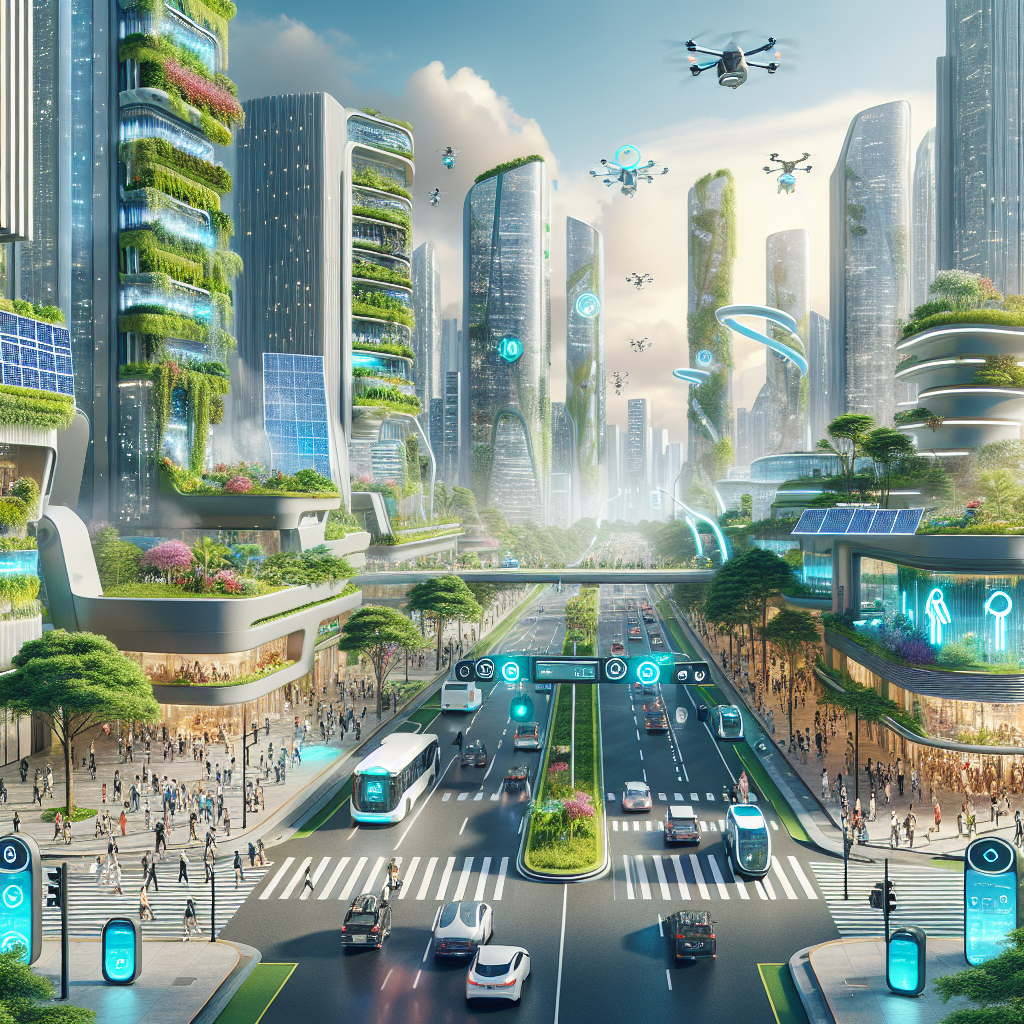How Smart Cities Might Just Save the Planet: A Look into the Future of Urban Living

Imagine a city where traffic jams are a thing of the past, energy is used efficiently, and public services respond swiftly to citizens' needs. This dream is fast becoming a reality through the rise of smart cities. With technology woven into the very fabric of urban living, these forward-thinking cities are not just experiments; they could revolutionize the way we interact with our surroundings.
What Exactly is a Smart City?
At its core, a smart city employs various technologies and data analytics to improve urban services and enhance the overall quality of life for its residents. But don’t worry if you've never heard of terms like “IoT” (Internet of Things) or “big data”—what matters is how these elements translate into real-world benefits. Think modern traffic lights that communicate with each other to manage traffic flow, smart waste bins that signal when they need emptying, or energy-efficient buildings that adjust their power usage based on occupancy.
The Unsung Heroes: Technology in Action
Every day, technology plays an unseen role in making smart cities function. For instance, cities like Barcelona have utilized smart sensors to monitor air quality, which helps in promptly addressing pollution issues before they worsen. In Singapore, an intricate system of apps and dashboards keeps citizens informed about public transport waiting times and available shares in bike or car systems. These innovations not only enhance convenience but also promote sustainable living and environmental stewardship.
Challenges Tied to Smart Cities
Despite the potential advantages, the path to smart cities is not without hurdles. Concerns surrounding privacy, data security, and the digital divide often arise when discussing these advanced technologies. For instance, if a city collects data on citizens' habits to improve services, how can it ensure that this information is kept safe and used solely for public benefit? Furthermore, while technology can create conveniences, it’s crucial to ensure that these benefits are accessible to everyone, rather than only to those who can afford the latest devices.
The Road Ahead: What Can We Expect?
The global trend is moving towards increasing formation of smart cities as governments and organizations recognize their value. Research from the International Data Corporation (IDC) estimates that worldwide spending on smart city initiatives will reach over $135 billion by 2025. This monumental investment invites innovations that could blur the lines between technology and everyday life, creating an interconnected experience that benefits the societal whole.
Conclusion: A Collaborative Future
As societies become more urbanized, the development of smart cities may not just be an option but a necessity. By fostering collaboration between governments, technology providers, and community members, we can pave the way for urban spaces that are not only smart but also sustainable and inclusive. The vision of a smart city is one where technology serves as a tool for empowerment, improving quality of life while respecting the environment. In a world facing climate change and rapid urbanization, isn't it about time we invest our efforts into making this vision a reality?